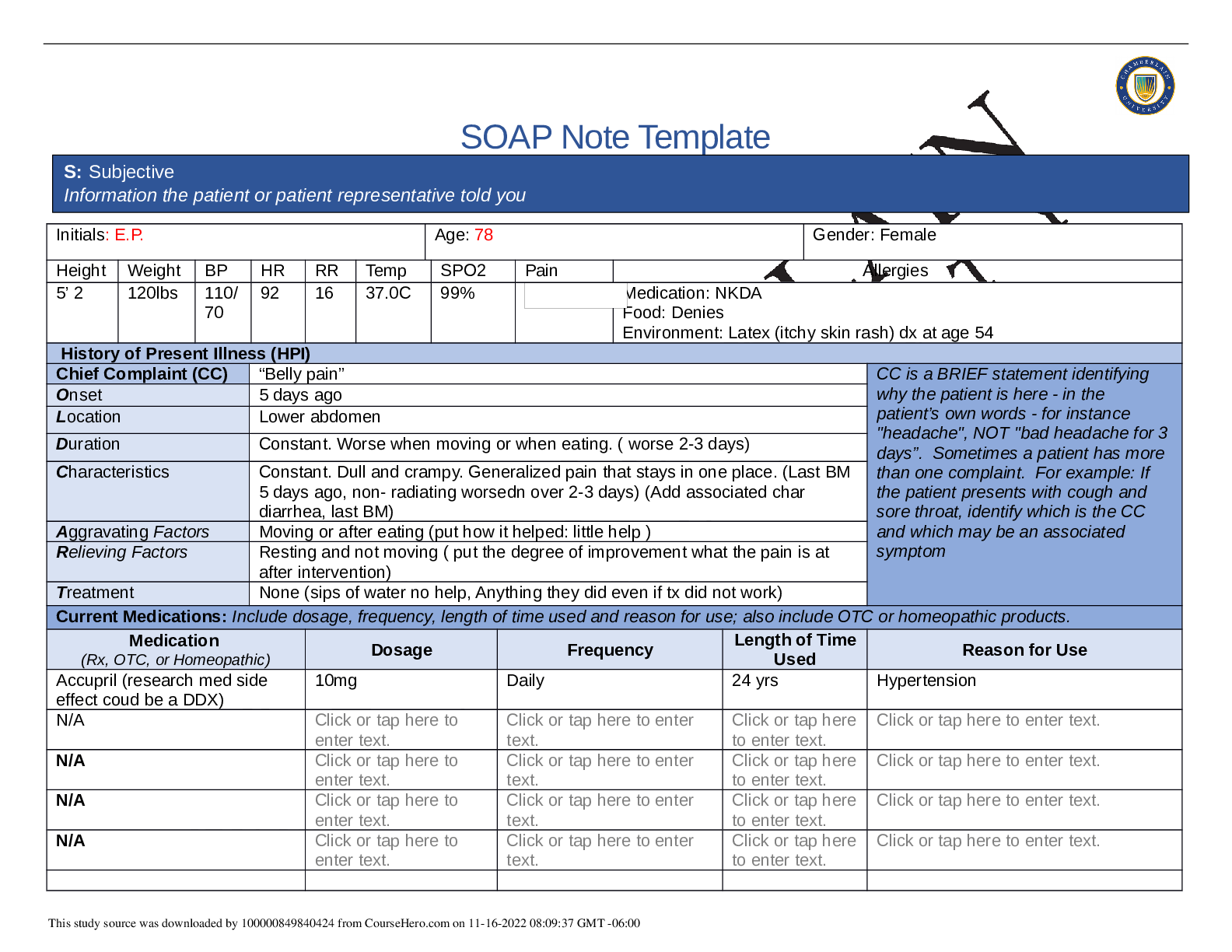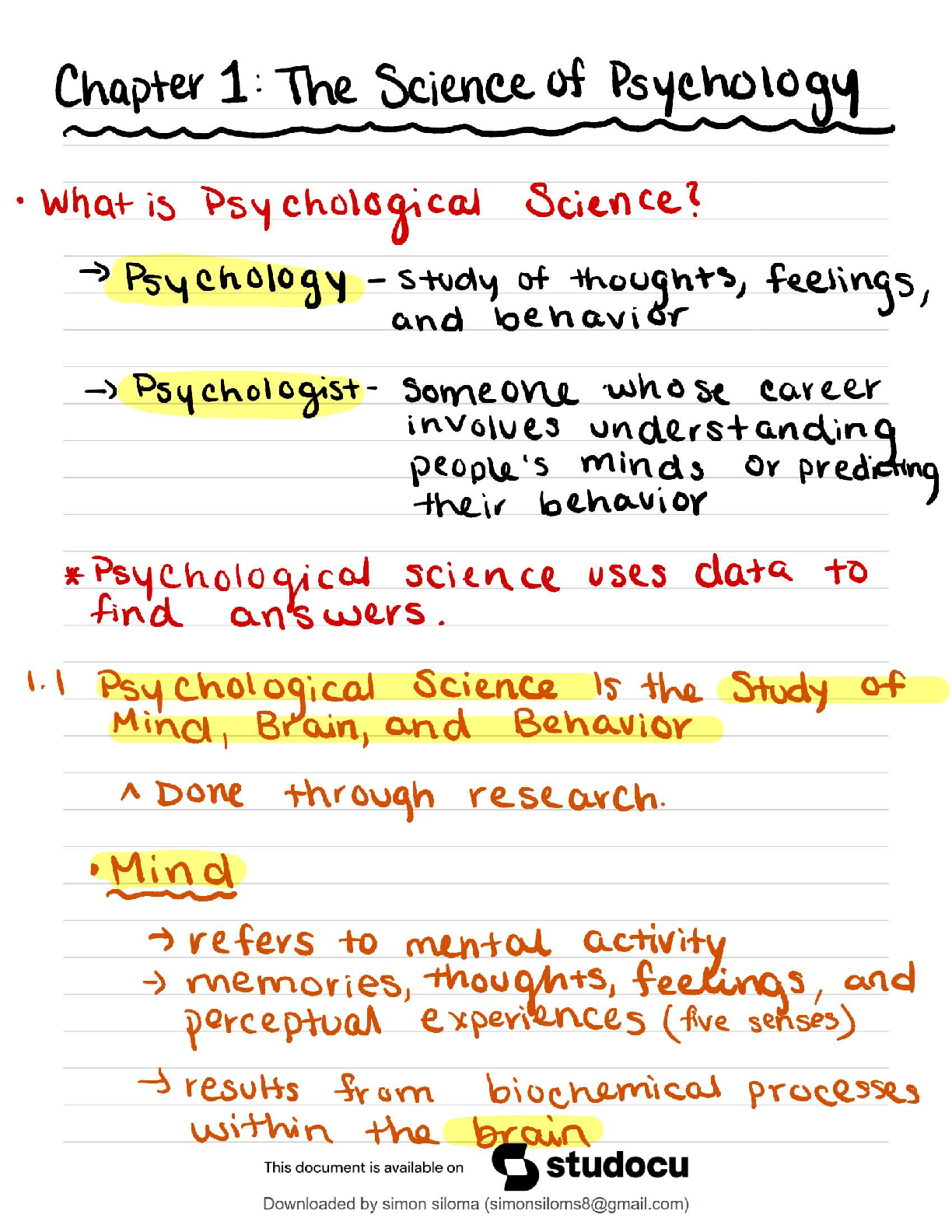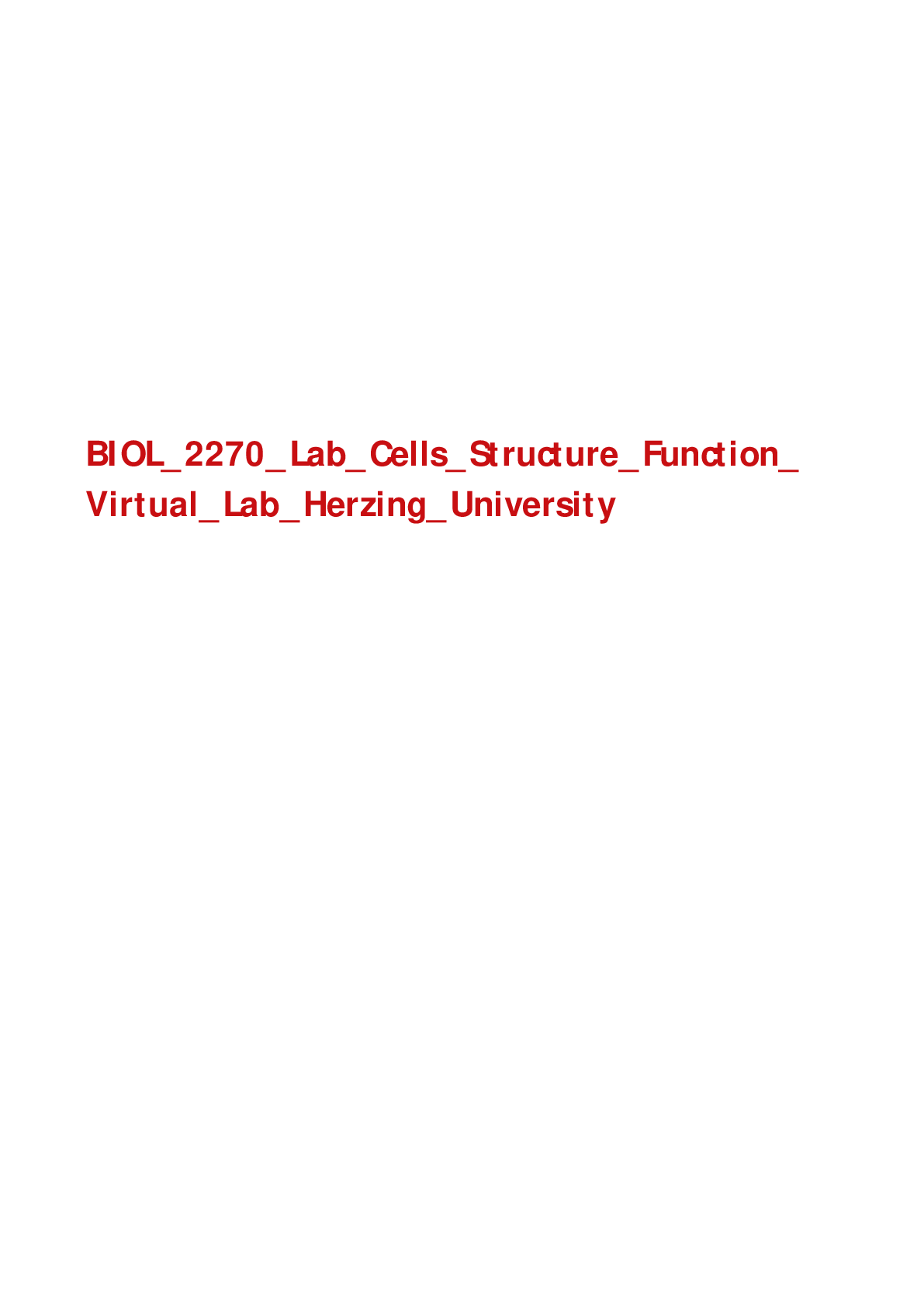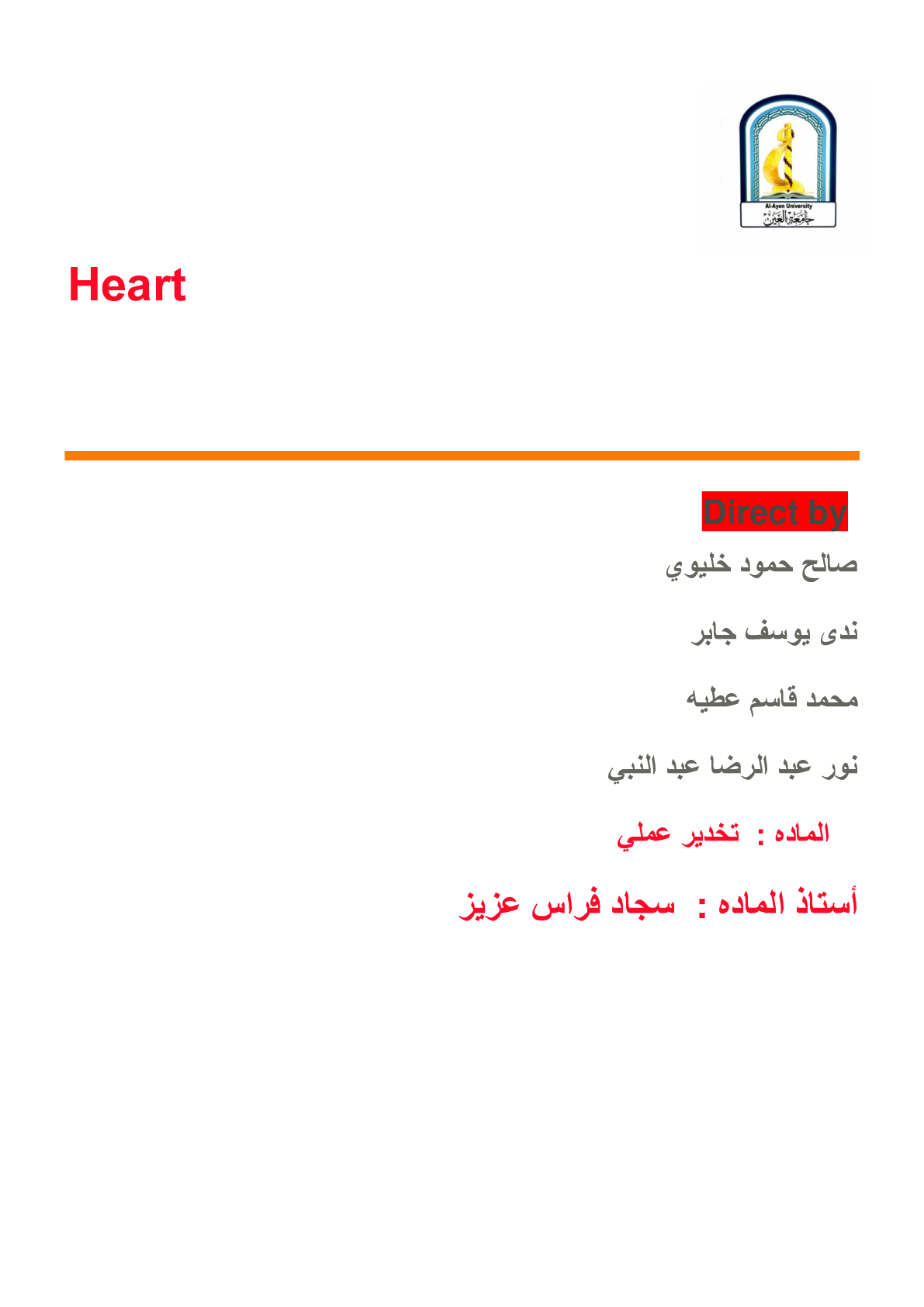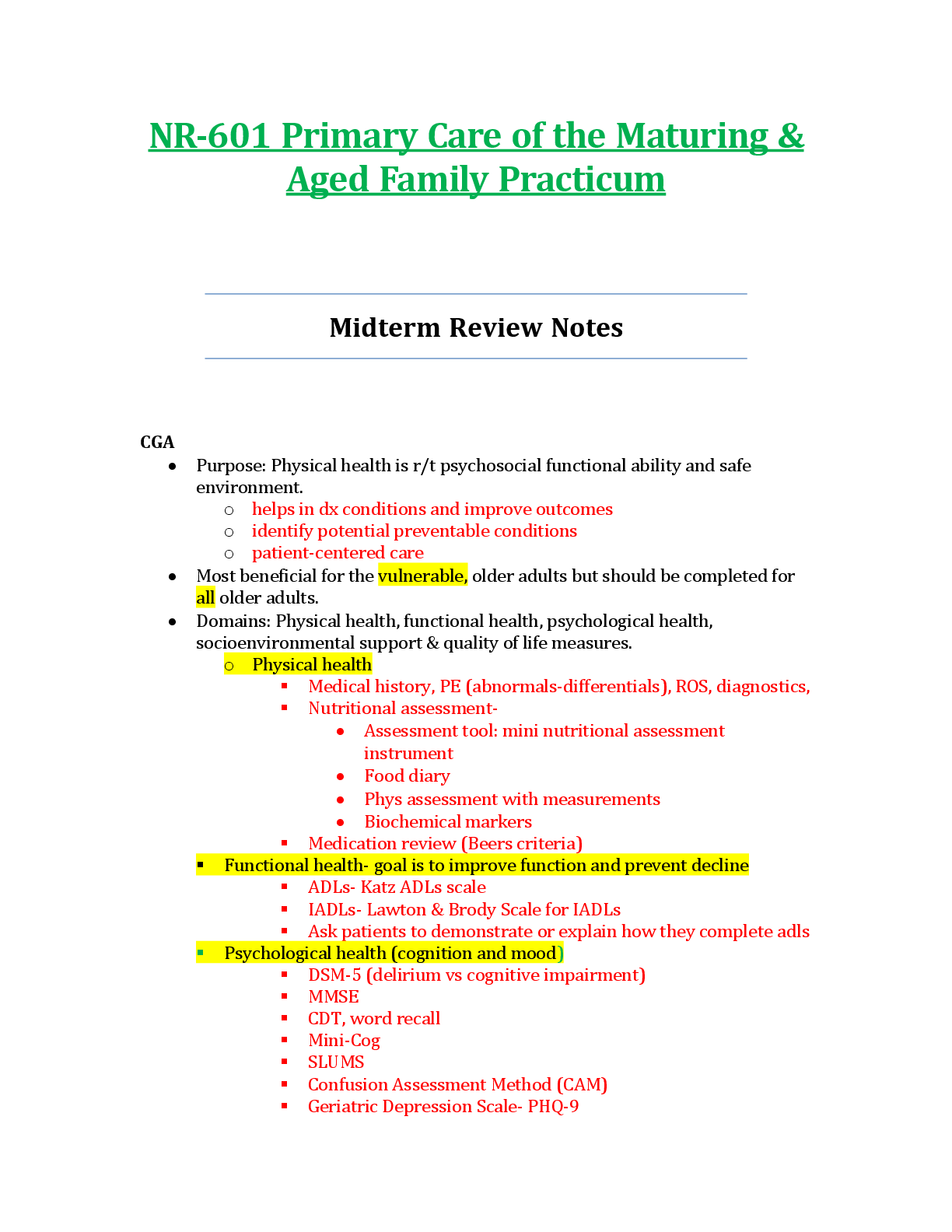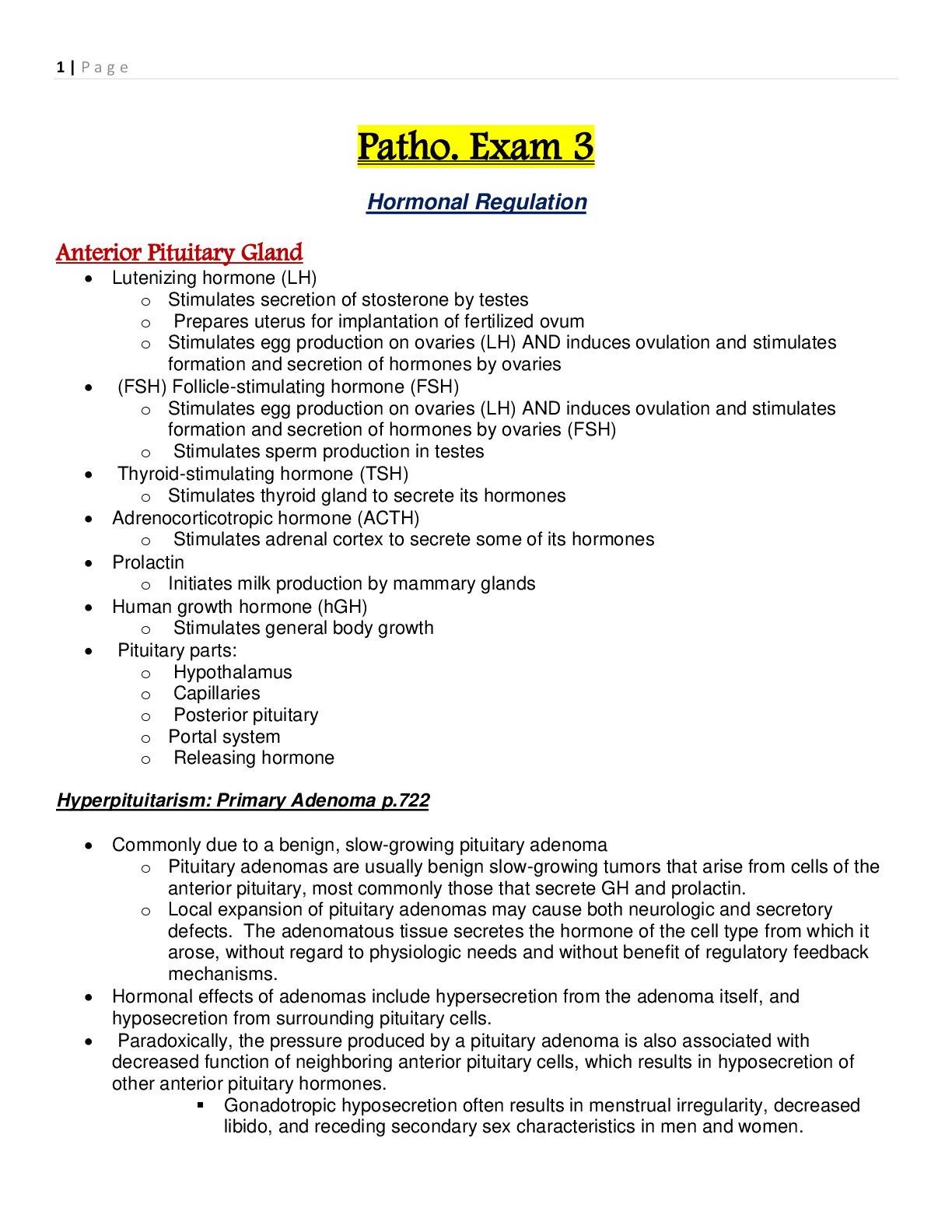NR511 MidTermNotes Chapters 3, 4, 5,7,8,9,11, 22 Principles of Primary Care
Document Content and Description Below
Chapters 3, 4, 5,7,8,9,11, 22
Principles of Primary Care
Diagnostic reasoning can be seen as a kind of critical thinking. Critical thinking involves the process of questioning one’s thinking to de
...
termine if all possible avenues have been explored and if the conclusions that are being drawn are based on evidence. Diagnostic reasoning then includes a systematic way of thinking that evaluates each new piece of data as it either supports some diagnostic hypothesis or reduces the likelihood of others.
The type of data that you collect depends on the type of visit. Most visits are episodic or problem-focused where 1 or 2 specific issues need to be addressed. One thing I want to point out is that the information in the H&P should only be relevant to the complaint or problems that you are addressing. So, a patient with only a skin complaint does not need a full H&P. Rather, a focused history and exam as it relates to the skin complaint or associated symptoms should be recorded.
First, I want to go over two important, distinct concepts that seem to be an area of confusion for many students: subjective and objective findings. We will discuss these in more detail when we introduce the SOAP note lecture.
To start, subjective information is what the patient:
1) reports,
2) complains of; or
3) tells you in response to your questions.
Examples of subjective information include the following:
• Constitutional: fever, chills, lethargy, weight loss or gain, and so on
• HEENT: headache, blurred vision, otalgia, sore throat, and so on
• Neck: swollen lymph nodes, and so on
• Lungs: SOB, cough, wheezing, and so on
These are all examples of subjective information. Subjective information is the S part of the SOAP note, which includes CC, HPI, and ROS, as these are all things that the patient reports to you in an interview.
Objective information is what you can see, hear, or feel as part of your clinical exam. It also includes laboratory data and test results. Examples of objective information include the following:
• Constitutional: well-developed, well-groomed, thin, cachectic, obese, and so on
• HEENT: Normocephalic, PERRL
.....................................................................................continued..................................................................................................................................................
[Show More]
Last updated: 3 years ago
Preview 1 out of 222 pages
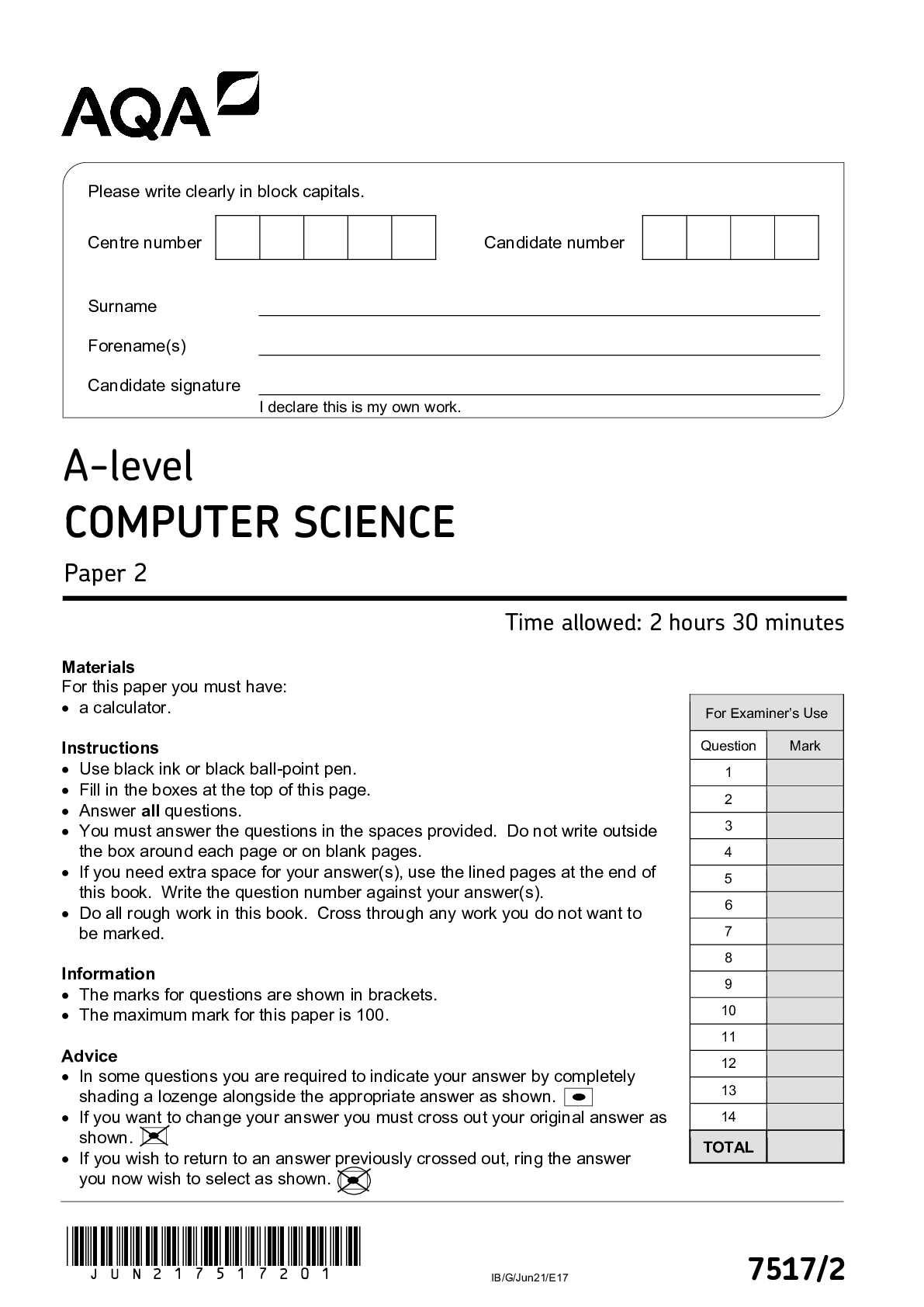


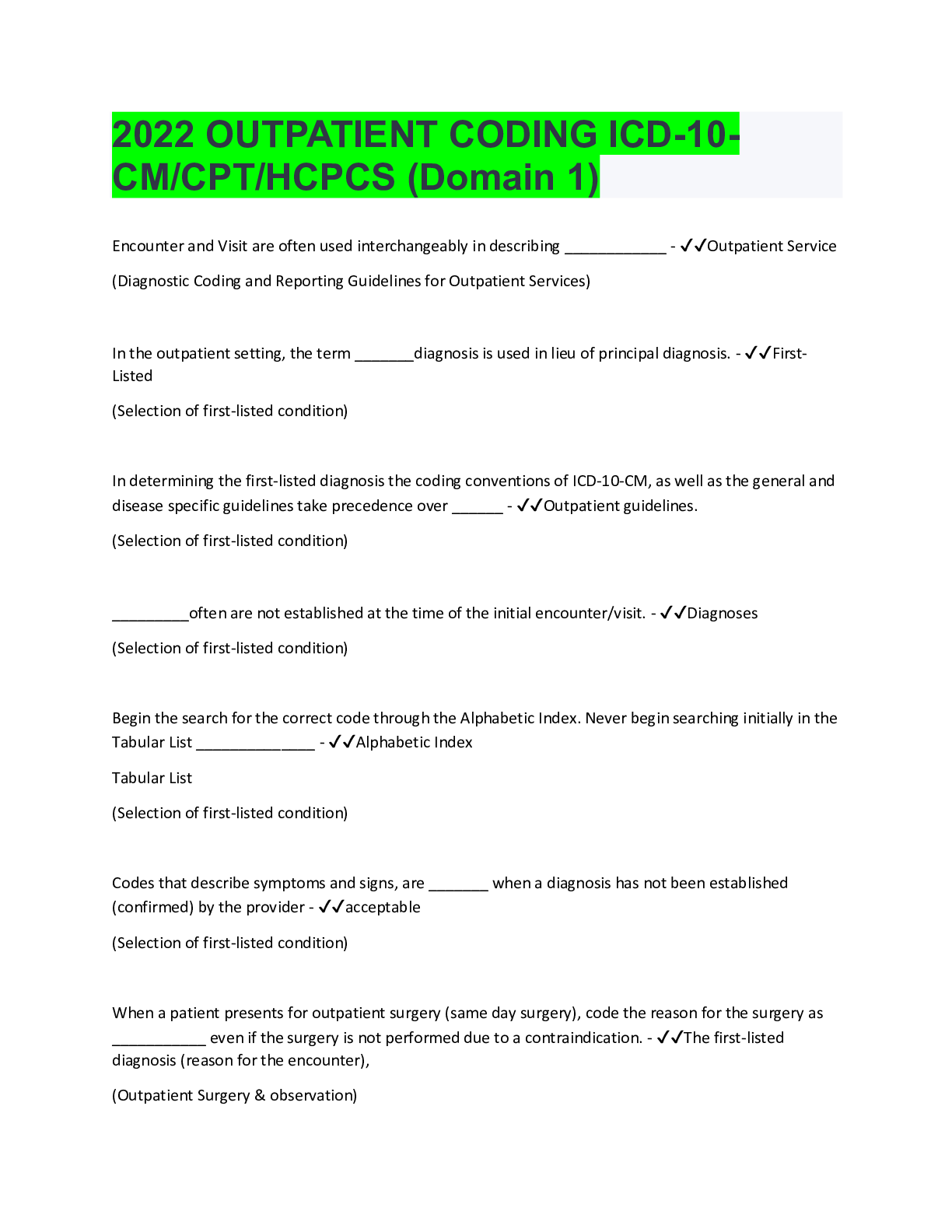



.png)



.png)


